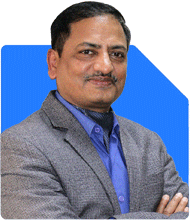I have a question on my EPF, I am unable to transfer my old PF money to new company pf account. Everytime I tried it got rejected by field officer and I go to know the information stating previously in old organisation I had applied for pension now that option is not opted by me hence cannot be transfered. I left as is.. because interest was getting accumulated for the old PF account. Now I am worried because the interest did not get credited for this year 2024-25. Please can someone help me about this.
Ans: You’ve acted wisely by tracking your EPF.
Your concern is genuine. Many employees face similar EPF transfer issues due to pension-related mismatches. Let's understand your situation clearly and offer practical, 360-degree solutions.
» EPF transfer rejection due to pension option error
– You had applied for pension withdrawal in your old job.
– That means your EPS account (pension) was settled earlier.
– Now, while transferring, your PF and EPS are both linked.
– Since EPS is already settled, EPFO system is rejecting the request.
– System expects both PF and EPS to be available for transfer.
– But EPS is missing, hence the mismatch causes rejection.
» Leaving old EPF as it is: why it worked till now
– You noticed interest was accumulating till last year.
– EPFO pays interest even on inactive accounts for up to 3 years.
– So, if your old PF became inactive in 2021–22, interest will stop after 2024–25.
– That’s why no interest got credited this year.
– EPFO changed rules: after 3 years of inactivity, interest stops.
– So your old EPF is now considered inoperative.
» Understanding inoperative EPF and its impact
– Inoperative PF earns no interest after 3 years of no contribution.
– This hits long-term compounding badly.
– You will lose value due to inflation.
– Funds remain safe but growth stops.
– You can still withdraw it anytime.
– But it won’t grow anymore.
» How EPS withdrawal earlier blocks transfer now
– EPS (Employee Pension Scheme) and EPF run together.
– When you withdrew EPS from old job, the system marked that account “settled”.
– So, only PF balance remained.
– EPFO transfer system checks for both PF and EPS.
– Since EPS was withdrawn, system thinks account is closed.
– Hence, it doesn’t allow PF transfer alone.
– Manual intervention becomes necessary in this case.
» Next step: what you can do now
– Don’t worry. This is fixable with the right steps.
– You have two main options to act now.
» Option 1: Withdraw the old PF money fully
– Since your old PF account is not earning interest now, you can withdraw.
– Visit https://unifiedportal-mem.epfindia.gov.in/memberinterface/
– Login using UAN and OTP.
– Go to ‘Online Services’ → ‘Claim (Form-31, 19 & 10C)’.
– Choose Form-19 for full PF withdrawal.
– Fill and submit claim.
– Funds will be credited in 5–15 working days.
– Make sure your bank details, Aadhaar, PAN, UAN are linked and verified.
– This is the easiest and cleanest way forward now.
» Option 2: Try manual EPF transfer through grievance portal
– If you still want to transfer funds to new PF account, go for manual route.
– Visit EPF grievance portal: https://epfigms.gov.in/
– Select ‘Register Grievance’.
– Fill your UAN, personal and employment details.
– In subject, mention: “Unable to transfer old PF due to EPS withdrawal”.
– Write clearly: “EPS already settled. Request PF transfer only.”
– Attach relevant documents: previous PF passbook, EPS settlement proof, UAN card, Aadhaar.
– Ask EPFO to allow manual PF-only transfer.
– Follow up with Field Officer at your regional EPFO office.
» Understanding why withdrawal may be better than transfer here
– Your old PF account has stopped earning interest now.
– Keeping idle money in EPFO doesn't make sense.
– You’re missing future growth.
– Transferring also needs manual efforts and delays.
– Withdrawal is faster and cleaner.
– You can reinvest withdrawn money in growth-based instruments.
– You can build wealth more actively from that amount.
» What if you are not able to withdraw also?
– If portal shows error or bank/Aadhaar not updated, do this:
– Go to your employer’s HR for KYC update in EPFO.
– Submit Aadhaar, PAN, and cancelled cheque.
– Once approved by employer, you can withdraw.
– Or update these online in EPFO portal under ‘Manage > KYC’.
– Keep checking status every few days.
» Avoid delay and inaction anymore
– The earlier you act, the better.
– Every month your idle EPF loses earning power.
– Don’t let inflation reduce your corpus value.
– Reinvesting now gives better financial outcomes.
» Reinvest EPF withdrawal smartly for better growth
– If you withdraw EPF, don’t let it sit in savings account.
– You can invest in long-term diversified funds.
– Select regular plans through a Certified Financial Planner or MFD.
– Avoid direct plans.
– Direct funds give no guidance or support.
– Regular funds through an expert help in goal-based, reviewed investing.
– This brings discipline and avoids emotional decisions.
» Why direct mutual funds are not right for most investors
– Direct funds look cheap but lack personalised advice.
– You must track, manage, and rebalance yourself.
– No one guides you if market falls or goals change.
– Without CFP-led support, chances of mistakes are high.
– Many direct fund users exit early or choose wrong schemes.
– Regular plans with expert help lead to better long-term behaviour.
– Costs are higher, but results and peace of mind are better.
» Build long-term wealth using the withdrawn PF amount
– You can split the amount into short-term and long-term goals.
– Use debt mutual funds for next 1–3 year goals.
– Use equity mutual funds for 5+ years goals.
– Avoid index funds.
– Index funds copy market returns only.
– They do not adapt to market conditions.
– They cannot beat inflation in all phases.
– Actively managed funds can outperform with expert decisions.
– Choose experienced fund houses with good track record.
» Keep future PF accounts active always
– In your new job, ensure your EPF is regularly updated.
– Link Aadhaar and PAN with UAN.
– Download passbook every 6 months and track interest.
– Update nominee details.
– Keep mobile number active and linked.
– Regular monitoring prevents similar problems in future.
» Watch out for new EPF rules and interest changes
– EPFO interest rate changes yearly.
– Inactive accounts earn nothing after 3 years.
– Keep PF active by contributing or transferring.
– Long gaps reduce interest benefit.
– Track annual credit in April–July every year.
» Use grievance portal for any future issues
– EPF-related issues are best resolved via: https://epfigms.gov.in/
– Raise ticket with UAN and issue details.
– Attach screenshots or documents if needed.
– EPFO responds within 10–15 days usually.
– Follow up by calling regional office if delay happens.
» Consider PF partial withdrawal only when needed
– You can withdraw PF for home, marriage, or medical needs.
– But full withdrawal should be done only after job change or unemployment.
– Avoid breaking PF for short-term needs.
– It breaks long-term compounding.
– Use emergency funds instead.
» EPS amount once withdrawn cannot be restored
– Since you withdrew EPS earlier, you cannot restore pension benefit now.
– Only PF balance is available now.
– Future employers will build new EPS account.
– At retirement, EPS benefit depends on service years and contribution.
– Keep tracking EPS service years regularly.
» Build a backup for retirement beyond EPF
– EPF alone is not enough for retirement.
– It is low-growth and conservative.
– Use SIPs in equity funds through regular plans.
– Use PPF or debt funds for stability.
– Build a diversified retirement corpus over time.
– Don’t depend only on EPF interest.
» Final Insights
– You’ve done well by monitoring EPF and raising concerns.
– Act quickly now—withdraw or request manual transfer.
– Let the funds work for you again.
– In future, avoid PF inactivity beyond 3 years.
– Reinvest the funds for long-term wealth.
– Take support from a trusted CFP-led platform or MFD.
– Avoid DIY mistakes in mutual funds.
– Build a better, stable future using informed choices.
Best Regards,
K. Ramalingam, MBA, CFP,
Chief Financial Planner,
www.holisticinvestment.in
https://www.youtube.com/@HolisticInvestment


























